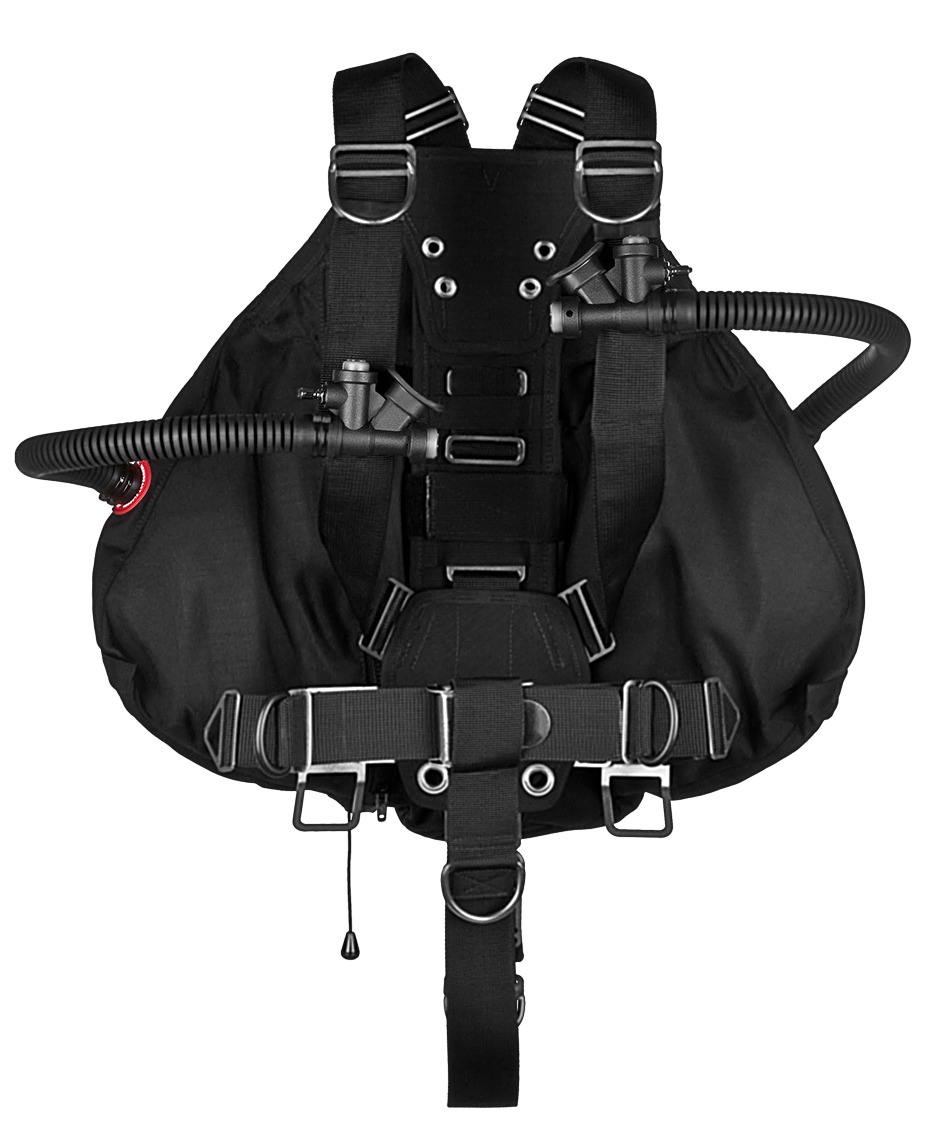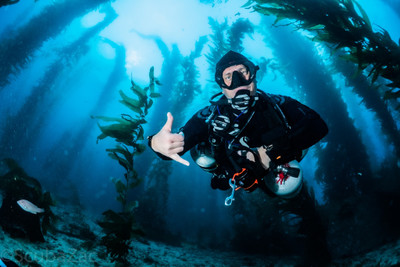Sidemount Diving: A Comprehensive Introduction
Posted by Dive Pro: William Taylor on on Oct 24th 2024
Sidemount diving, where scuba cylinders are mounted along the sides of the diver rather than on the back, is rapidly gaining popularity among recreational and technical divers. This configuration offers several advantages that make it an attractive option for those seeking a new and exciting diving experience.

Benefits of Sidemount Diving
- Enhanced Agility and Maneuverability: Sidemount diving provides greater flexibility and agility compared to traditional backmount setups. Divers can move more easily through confined spaces, navigate wrecks with precision, and perform tasks like photography and cave exploration with greater ease.
- Improved Trim: The positioning of cylinders on the sides of the diver creates a more streamlined profile, making it easier to maintain neutral buoyancy and achieve a better horizontal trim. This results in less energy expenditure and a more comfortable diving experience.
- Easier Equipment Access: In sidemount diving, cylinders are readily accessible from both sides, allowing divers to quickly and easily switch between primary and secondary regulators without having to contort their bodies. This is particularly beneficial in emergency situations.
- Increased Stability: The weight distribution of sidemount cylinders helps to improve stability, especially in currents or when carrying heavy equipment. This can enhance safety and reduce fatigue.
- Versatility: Sidemount diving is suitable for a wide range of diving activities, including recreational diving, wreck diving, cave diving, and technical diving. It offers versatility and adaptability to suit different diving preferences and skill levels.
Choosing the Right Sidemount System
When selecting a sidemount system, it's essential to consider factors such as comfort, adjustability, and compatibility with your specific diving needs. Two popular sidemount systems that have garnered significant attention are the XDEEP Stealth 2.0 TEC and the Hollis Katana 2.
XDEEP Stealth 2.0 TEC

The XDEEP Stealth 2.0 TEC is a high-performance sidemount system designed for both recreational and technical divers. It features a robust construction, excellent adjustability, and a comfortable fit. Some key features of the Stealth 2.0 TEC include:
- Butt Dump System: The Stealth 2.0 TEC incorporates a butt dump system, which allows divers to quickly and easily release excess gas from their wing by inflating it and then venting the gas through a dump valve located near the diver's buttocks. This system is highly efficient and easy to use, even in challenging conditions.
- Durability: The system is built to withstand the rigors of demanding diving environments, with durable materials and robust construction.
- Customization: XDeep BCD's all have the option to customize using the online tool provided on XDeep's website.
Hollis Katana 2

The Hollis Katana 2 is another well-regarded sidemount system known for its simplicity, reliability, and comfort. It is a popular choice among recreational divers and is particularly favored in regions like Florida. Key features of the Katana 2 include:
- Integrated Wing and Harness: The Katana 2 features an integrated wing and harness design, which eliminates the need for separate components and simplifies the setup process.
- Adjustability: The Hollis Katana 2 offers a wide range of adjustment options, allowing divers to customize the fit to their individual body shape and preferences. The harness can be easily adjusted for shoulder length, crotch strap position, and overall fit.
- Comfort: The Katana 2 offers a comfortable fit, with padded straps and a well-designed spine support.
- Versatility: The system is suitable for a wide range of diving activities, from recreational diving to technical diving.
Tank Selection
The choice of tank size for sidemount diving depends on factors such as the type of diving being undertaken, the depth of the dive, and the desired bottom time. Some of the most commonly used tank sizes for sidemount diving include:
- LP50 Steel Tanks: These compact and lightweight steel tanks are ideal for recreational diving and shallow wreck exploration. They offer a good balance of capacity and portability.
- Aluminum 80s: These larger aluminum tanks are commonly used for technical diving and deep dives. They provide ample gas supply for extended bottom times.
Types of Diving with Sidemount
Sidemount diving is suitable for a variety of diving activities, including:
- Wreck Diving: The enhanced maneuverability and agility provided by sidemount diving make it an excellent choice for exploring wrecks. Divers can easily navigate through tight spaces and access different areas of the wreck.
- Cave Diving: Sidemount diving is also well-suited for cave exploration. The streamlined profile and improved trim allow divers to navigate through narrow passages and maintain a stable position.
Sidemount diving offers a unique and rewarding diving experience that is gaining popularity among both recreational and technical divers. By providing enhanced agility, maneuverability, and stability, sidemount diving allows divers to explore new dive sites and experience the underwater world in a more immersive way. Whether you are a seasoned diver looking for a new challenge or a beginner seeking a versatile and exciting diving system, sidemount diving is definitely worth considering.
Let's get you started on your sidemount journey, check out our certification course here.
If you purchase a sidemount set from us, the course is FREE!
Give us a call at (888) SCUBA LA if you have any questions!

